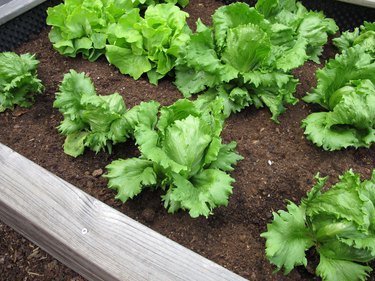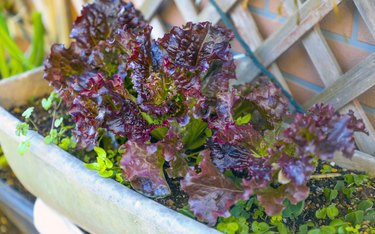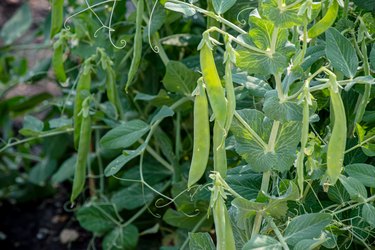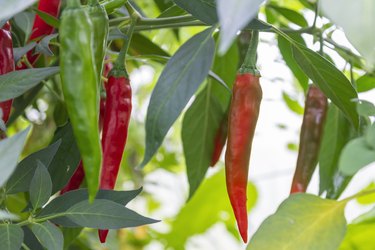
People who are new to gardening or those without the time or inclination to fuss with plants often choose self-pollinating vegetables due to their ease of propagation compared to those that require insect, wind, or artificial pollination by a human. Largely grown as annuals, self-pollinating vegetables are cultivated in all U.S. Department of Agriculture plant hardiness zones. With self-pollinating plants, gardeners can count on a true plant from year to year and can often save seeds from high-yielding plants.
1. Self-Pollinating Salad Greens
Video of the Day

Some classic salad greens, such as head lettuce (Lactuca sativa var. capitata) and leaf lettuce (Lactuca sativa var. crispa), are self-pollinating vegetables. Gardeners in northern climates often plant two rounds of greens each year, the first in the spring and a second in the fall. The male reproductive cells, or anthers, are fused together and completely surround the female cells, or the stigma and style. As the flower grows, the style grows through the anther cone and is self-pollinated. Most varieties of lettuce produce seeds that can be saved for the next gardening season, even as the gardener harvests the leaves for consumption.
Video of the Day
Some herbaceous plants, such as chicory (Cichorium intybus) and its relative, endive (Cichorium endivia), are self-pollinating plants found in the wild as well as cultivated in the garden. Gardeners grow chicory to eat the leaves in salads, and the buds and roots may also be brewed as a substitute for coffee. Due to the bitterness of endive and chicory, these vegetables are usually eaten as a mixture with other greens if consumed raw, although cooking the greens in a soup, stew, or sauce helps to mellow the flavor.
2. Self-Pollinating Legumes

Legumes, such as peas (Pisum sativum), lima beans (Phaseolus limensis), and green beans (Phaseolus vulgaris), including bush and climbing varieties, are self-pollinators. These vegetables grow well when sown directly in the ground as opposed to being started in a container indoors and then transplanted. These plants self-pollinate even before the flowers open, which prevents any cross-pollination by insects or the wind. The seeds of legumes are easily collected and stored for future use and are true to the parent variety from year to year.
3. Self-Pollinating Peppers

Varieties of peppers (Capsicum spp.) are usually self-pollinating. Peppers that self-pollinate include hot peppers, such as jalapeños (Capsicum annuum var. annuum), as well as sweet bell types (Capsicum annuum). If you're saving seeds, wear gloves, as the capsaicin — the chemical that gives peppers heat — can linger on the seeds and cause a reaction on the fingers and hands.
In addition, if planting both hot and sweet varieties, keep both varieties of plants caged under window screening or cheesecloth or plant them at least 600 feet apart (or as far apart as possible) with a barrier crop, such as tomatoes (Lycopersicon esculentum), between them. Insects can cross-pollinate peppers, and dominant hot genes overtake sweetness in plants grown from the new seeds.